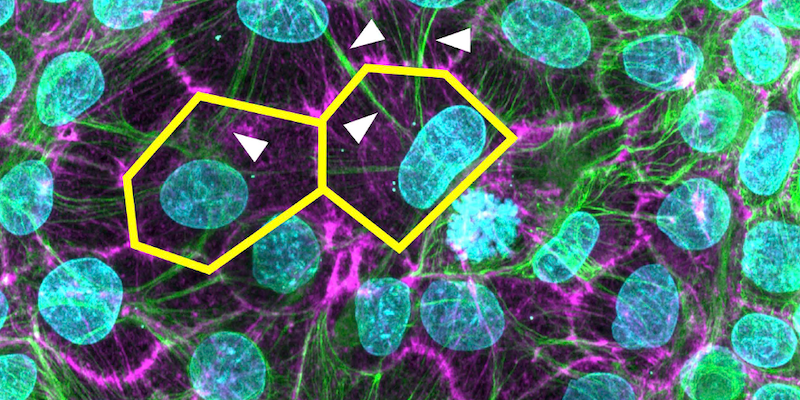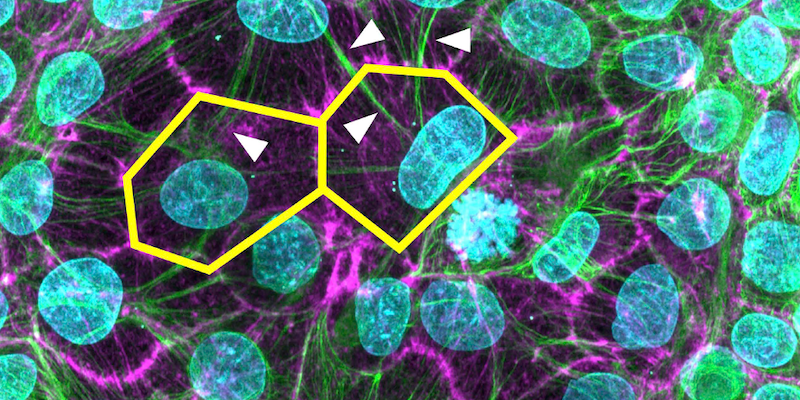Knotted Networks Form Cellular Safety Nets
Thin bags filled with water aren’t the obvious material for building robust, complex structures. But when it comes to constructing biological tissues, such bags—which biological cells essentially resemble—are what nature has to work with. To provide the necessary mechanical properties, cells’ interiors are reinforced with various biopolymer networks, with each network resisting strain in a different stress regime. Now Marco Pensalfini of the Polytechnic University of Catalonia, Spain, and his colleagues have investigated the dynamics of one of these networks—the so-called intermediate-filament (IF) network—which helps keep the cells in epithelial tissues intact under large deformations [1]. The researchers show that the role of this network as a cellular “safety net” depends on how the filaments tangle together.
IFs are flexible, extensible strands of protein a few micrometers in length. Opposite ends of these strands attach to movable spots on a cell’s membrane. When relaxed, the filaments are coiled, forming a diffuse tangle throughout the cell’s volume. Under strain, the filaments are pulled taut, such that they form a star-shaped network that has a dense knot at its center. This reconfiguration limits further deformation.
Pensalfini and his colleagues simulated IF networks in polygonal cells whose sides were pulled outward. They varied the topology of the networks—the degree to which the filaments wrapped around each other—and measured how it affected the point at which the filaments became taut. They found that they could use a simple topological measure independent of the network’s size to predict the strain required to “activate” the filaments and engage the safety net. Next, the researchers intend to study how IF networks interact with the other biopolymer networks present in cells.
–Marric Stephens
Marric Stephens is a Corresponding Editor for Physics Magazine based in Bristol, UK.
References
- M. Pensalfini et al., “Nonaffine mechanics of entangled networks inspired by intermediate filaments,” Phys. Rev. Lett. 131, 058101 (2023).





